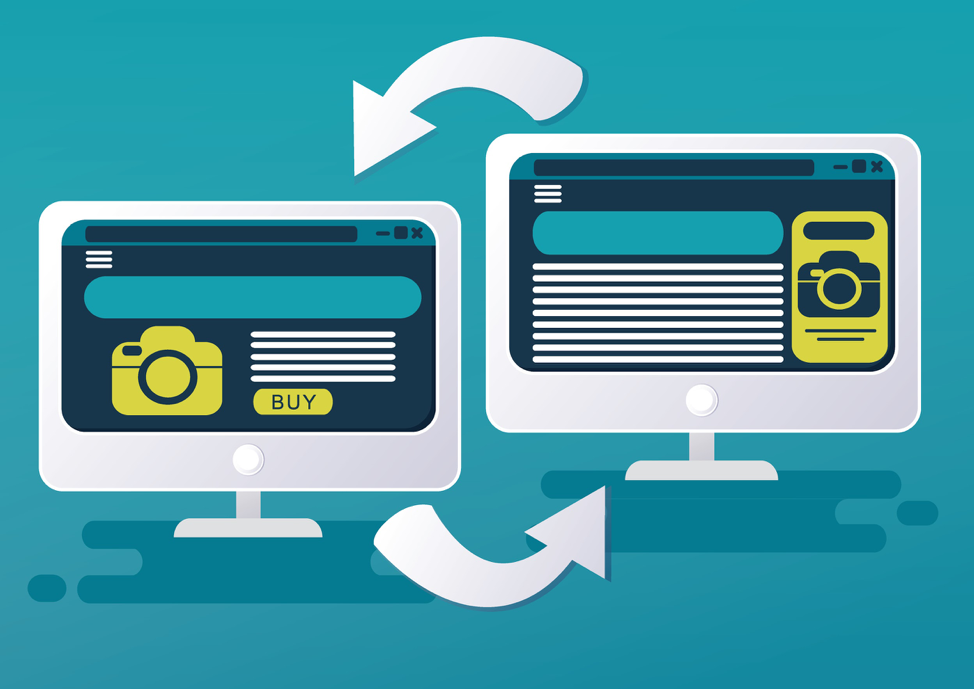So, you decided to launch a Facebook Ads campaign, but you don’t know how exactly your ads should look like. They need to be relevant to your target audience and catch the attention easily. This can be achieved by personalizing your advertising campaigns on Facebook and here are four ways you can do this.

Run re-engagement campaigns
Re-engagement campaigns are perfect for personalizing your Facebook Ads campaigns. However, you should keep in mind that re-engagement is quite different from retargeting. To put it simply:
-
Re-engagement is about engaging the audience that lost interest in your business. Such campaigns are often referred to as remarketing and include email marketing.
-
Retargeting is about targeting the users who have interacted with your company before in some way. It’s somewhat of a re-engagement tactic but it focuses more on online ads rather than emails.
Of course, re-engagement campaigns are pretty common in emails, but not as common in ads. In email marketing, you would set aside those who didn’t open your emails, then alter those emails a bit by changing the subject line and such, and then send it out to this segment that didn’t open the emails in the first place. This way, you would recapture a part of “unopens”.
Alternatively, you could select people who opened your emails but didn’t move up or even moved down your sales funnel. Then, you would personalize emails for them and send them out. A similar tactic can be used in your Facebook Ads campaigns.
For example, some of your potential customers added certain items to their cart but didn’t get to the payment and shipping. Maybe they simply viewed the items or added them to their wish-list. What you can do is offer them discounts through ads on these specific items that they got interested in.
This tactic helps you win back their attention and customize ads in a way that is most relevant to these specific customers based on the topic or product they liked. It may seem difficult to complete such complicated actions but there are actually tools that can help you with re-engagement campaigns.
Benefit from sequential retargeting

Sequential retargeting is about showing different ads to the same people within the span of one day. Basically, it helps you land on the right offer for different potential customers which makes it extremely useful for personalizing Facebook Ads campaigns.
Unfortunately, Facebook Ads are known to have ridiculously short lifespans. Luckily enough, retargeting ads can help you prevent ad fatigue to some degree, but you will still need to personalize them as much as possible for this tactic to work.
The point is to pick up clues from users and respond to them by customizing your ads in a way that will be most relevant to them in order to keep them interested. The biggest danger for digital advertising is being irrelevant and sequential retargeting can help you avoid such a situation.
Sequential retargeting allows you to try out various options to see what fits. You show different ads to the same people over the course of a day and they eventually click on a certain ad. You take note of this and personalize the ads you show them based on this action from their side.
You could even try showing people ads in different languages and see if they respond to ads in certain languages better. Translating ads is quite easy these days with the help of an online translation and localization service like The Word Point. It’s quick and cheap and you will be able to find what’s right for your audience.
Consider having similar ads with different offers such as a free e-book, checklist, or discount for one of your products or services. The point is to have an offer that they won’t be able to resist. If someone started the check-out process, you could even simply remind them about free shipping and that could work. Ultimately, it all depends on the person.
By the way, don’t forget about creating separate landing pages for each of your ads. It is important to have these apart from each other because this will show you which of your ads worked better than the others. Besides, each landing page should correspond to the ad you are showing so make sure it is as personalized as possible.
Focus on non-conversions

Non-conversions are often overlooked and dismissed as a group that doesn’t need to be invested in. After all, they aren’t responding to your campaigns, so why bother? But there are actually two main reasons why non-conversions are important:
- Non-conversions are just as important as conversions because they are one of your target groups.
- You need to create a new audience based on the people who visit your page but don’t convert.
Imagine this situation: the user clicks on your ad and goes to your landing page but they don’t complete the action you want them to make (e.g. subscribe to the newsletter, purchase an item, download a free ebook, etc.) What would you do next? Well, you need to take the route of personalizing your Facebook Ads campaign yet again.
Create a new audience made up of those who visit the landing page don’t convert. Then, personalize your ads and your message based on this behavior. You will need to sort all of your page visitors very carefully based on the ad they clicked, the page they got to, whether they converted or not, and whether or not they interacted with your ads or website in any other way.
Try not to throw all the non-conversions into one big pile and rather separate them based on the topic of the ads/the landing pages. Consider cross-selling and up-selling to different audiences depending on whether or not they become your customers.
The more filters you apply, the better, because this will mean that you segmented your target audience into small groups that can now receive the most personalized messages, ads, and content. This will, in turn, lead to a big number of conversions as they will start moving up your sales funnel step by step.
By the way, such small groups allow you to stay more focused. Even though you will need to put in more effort and probably spend more resources, it will pay off in the end as the response will also be bigger and better.
Start using super-remarketing tactics

Super-remarketing is about layering in different pieces of information to identify the exact people who will buy from a specific ad. The main components of super-remarketing are age, income, location, custom audience, interests, demographics, and behavior.
You could say that super-remarketing is a very concentrated version of retargeting and you will be correct as it allows you to personalize your Facebook Ads campaigns on a whole new level. Your aim is to figure out which people will be buying into a certain ad rather than figuring out which ads work for which audiences.
Super-remarketing takes into account such points as interests, behavior, demographics, and many more to create a complete picture of who your customers are. Here are the things you should look into closely to make your super-remarketing strategy work:
- Audience: Make sure that your custom audience has interacted with your brand in some way earlier. This could be a visit to your website, a watch of the video you posted, or interaction on social media.
- Age: Think of the age as a range rather than something very fixed. Consider whether or not you need to target one gender or you will be targeting both men and women (this will depend on your product or service).
- Location: People who live in an urban area are more likely to buy a pricier product. Obviously, if you are selling something expensive, you will need to target those living in big cities rather than in rural areas.
- Income: This one is optional, but if you do use it, it can become a valuable filter. Usually, the income of your audience will matter if you are aiming for professionals in certain industries or need your customers to have certain positions (e.g. CEOs).
Final thoughts
To sum up, personalizing Facebook Ads campaigns is fairly easy by running re-engagement campaigns, benefiting from sequential retargeting, paying attention to non-conversions, and using super-remarketing tactics. Follow the best practices outlined in this article and your Facebook Ads campaigns will definitely be successful.
